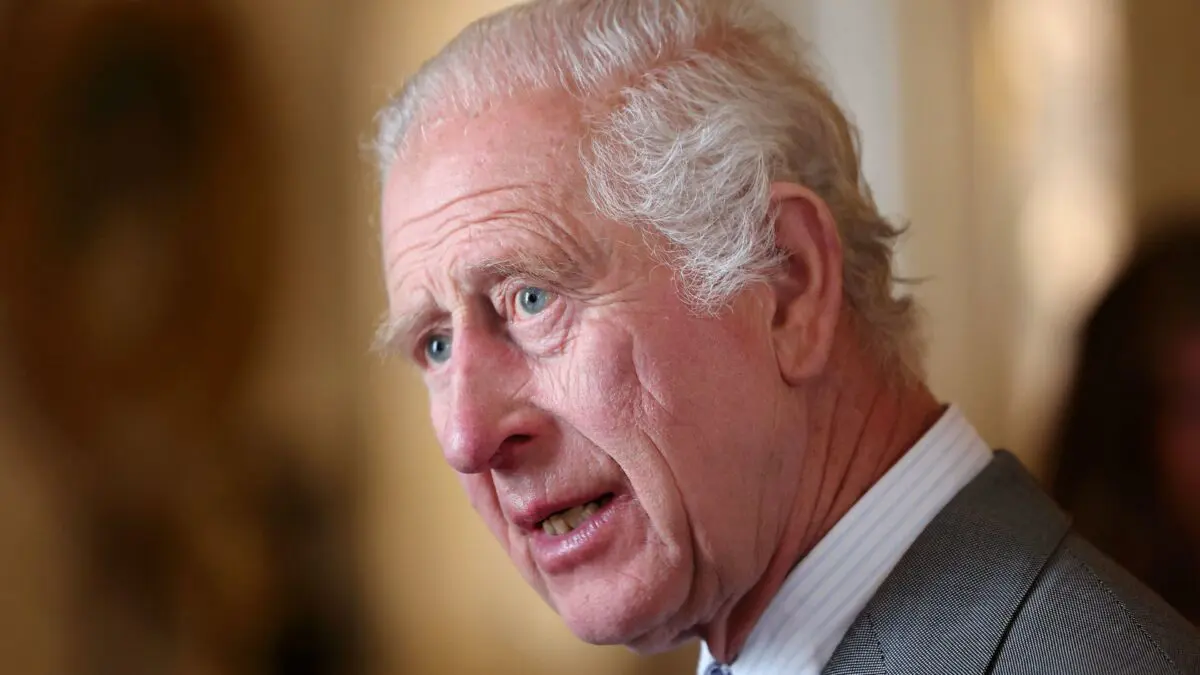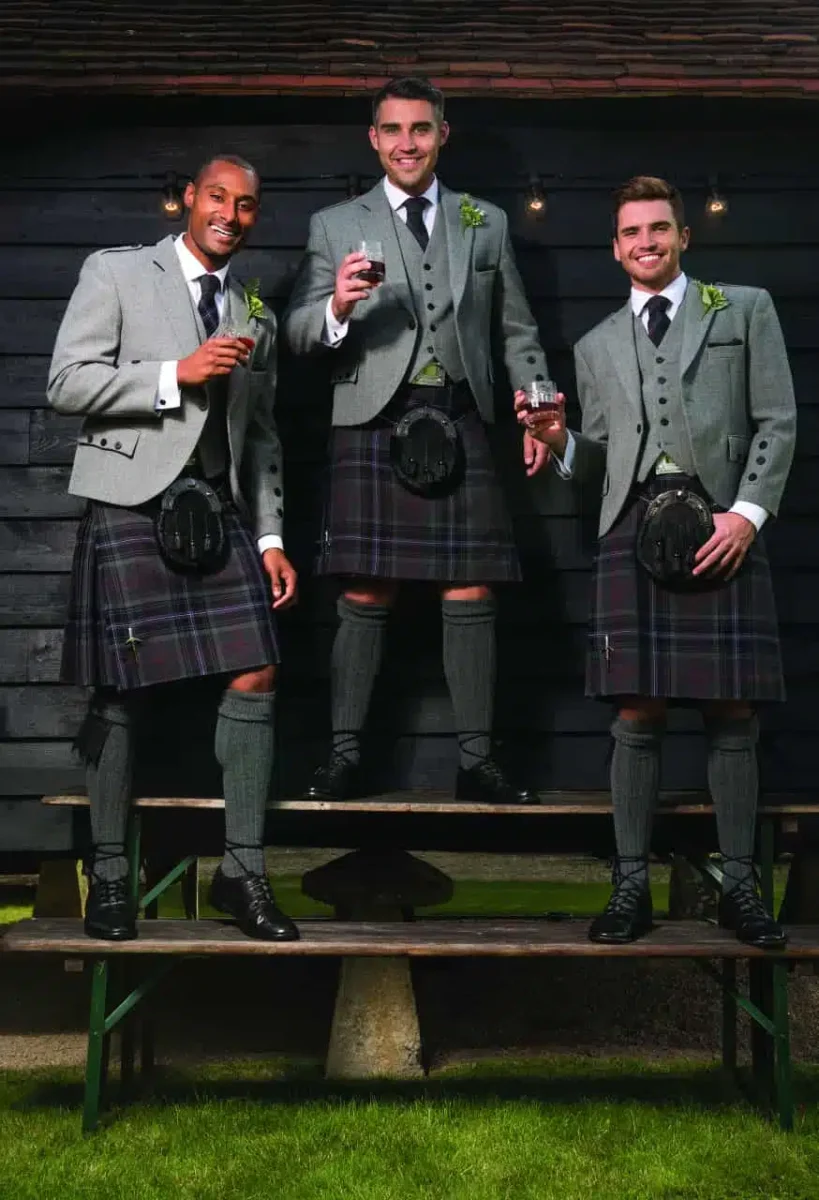A delightful new photograph of King Charles III has emerged, showcasing him in a stunning tartan kilt at the iconic Balmoral Castle. This captivating image was released to honor the cherished Burns Night, a traditional Scottish celebration held each year. Taken in the intimate setting of the library of the Royal Family’s historic Scottish retreat, the photo not only reflects the King’s deep appreciation for Scottish culture but also serves as a reminder of his royal lineage and connection to Scotland.
The King can be seen wearing the newly designed King Charles III tartan, a magnificent blend of green, blue, and red that signifies a rich history dating back to the Balmoral tartan pattern from around 1850. This colorful attire aligns perfectly with the spirit of Burns Night, which pays tribute to Scotland’s beloved poet, Robert Burns, who penned timeless verses and stanzas that still resonate today.
King Charles and His Tartan Kilt: A Nod to Heritage
King Charles III has long demonstrated his commitment to preserving Scottish traditions, and his latest appearance in the specially designed tartan kilt is no exception. The design, officially recognized by the Scottish Tartans Authority in 2023, reinforces the King’s steadfast support for Highland dress culture. As he dons this kilt, he not only embraces his Scottish roots but also highlights the historical importance of tartan in Scotland’s national identity.
The choice of wearing a kilt is particularly significant as it reflects the royal family’s longstanding connection to Scotland. Notably, Balmoral Castle has been a royal residence since the time of Queen Victoria and continues to be a cherished place for the family. The vibrant colors in the tartan represent the majestic Scottish landscape, making it a perfect outfit choice for the occasion.

The Legacy of Burns Night
Burns Night takes place each year on January 25th, commemorating the life of Robert Burns, Scotland’s national bard. The evening is marked by lively gatherings filled with music, dancing, and delectable food, most notably haggis, neeps, and tatties. A traditional Burns supper often features the recitation of Burns’ poems, allowing attendees to celebrate the culture and literary tradition stemming from Scotland.
This year’s celebration was particularly poignant, as King Charles III’s appearance not only honored Burns but also celebrated his own heritage. The warmth of the event brings together friends and family, all coming together to pay homage to the poet whose words have transcended generations. By showcasing a contemporary image of the King during such a significant event, the royal family continues to modernize its approach while maintaining respect for traditions.
A Closer Look at the Tartan Kilt
The tartan worn by King Charles III, named the King Charles III tartan, is not merely a fashion statement; it is a symbol of unity and cultural pride. Crafted using a unique sett pattern, this tartan aims to honor the history associated with Highland dress. It forms part of the rich narrative of Scotland’s past, intertwining the threads of heritage and identity into each weave.
The design process involved consultation with experts who ensured that the final product would resonate with the Scottish community, emphasizing the King’s support in preserving Highland traditions. Wearing this kilt reflects a modern expression of love for the region and its people, showcasing how royal figures continue to uphold and celebrate their roots.

Significance of the Kilt in Scottish Culture
The kilt is not merely clothing; it’s a meaningful part of Scottish identity, establishing a connection with history and culture. Traditionally, it is worn during formal occasions, celebrations, and performances involving Scottish lore. King Charles’s decision to don the kilt during Burns Night is a crucial reaffirmation of its importance not only in Scottish culture but also as a statement of royal solidarity with the Scottish people.
Symbolically, the kilt represents the wearer’s clan and heritage, making it a powerful emblem of individual and collective identity. The distinct nature of tartan patterns signifies various families and regions; thus, the wearing of a kilt tells a story that spans generations. King Charles, through his attire, embodies this narrative of unity, cultural pride, and affection for Scotland, connecting past and present.
Royal Photographers and Their Art
The enchanting photograph taken by Millie Pilkington, a renowned royal photographer, showcases her talent in capturing the essence of royal moments. Millie has been at the forefront of iconic royal imagery, skillfully portraying the family in both candid and formal settings. Her ability to encapsulate the personality of her subjects makes her a sought-after lens in royal photography.
Having previously documented significant events, including the wedding of the Prince and Princess of Wales, her artistic eye brings a unique narrative layer to royal representations. The portrait of King Charles wearing his kilt beautifully embodies the spirit of Burns Night, making it a cherished piece of history.

The Role of Photography in Royal Traditions
Photography has evolved as an indispensable tool in documenting the lives of royals, allowing the public to have glimpses into their personal and ceremonial moments. Over time, royal photographers have played a critical role in shaping public perceptions and narratives surrounding the monarchy. Images shared by the royal family, such as those illustrating Burns Night, contribute to storytelling and foster public engagement.
With every click of the camera, a moment is immortalized, bridging the gap between the royal family and the people. These visual records preserve not just historical events but also encapsulate the personal reflections of the individuals involved. The interplay of royal occasions and photography further establishes a cultural connection, adding vibrancy to the monarchy’s image.
Looking Forward: The King’s Upcoming Engagements
The image of King Charles in his tartan kilt stands out not only for its beauty but also for the symbolism it carries. As he prepares to journey to Poland for the anniversary of the Auschwitz concentration camp’s liberation, there is significance in his attire. His visit on January 27, marks a week’s end filled with both reflection and celebration. The King acknowledges the importance of remembering historical events while also participating in national celebrations.
Balancing reminders of the past with future engagements showcases the nuanced responsibilities of a modern monarch. As he embraces his Scottish background with pride, King Charles exemplifies how the monarchy continues to adapt while honoring its legacies. Such occasions present unique opportunities for the royal family to connect with their heritage while embracing contemporary issues.

Reflections on Modern Monarchy
The evolving image of the monarchy resonates deeply within contemporary society. King Charles, with his decisions and appearances, signals a willingness to engage actively with both tradition and modernity. By showcasing Scottish heritage during pivotal events like Burns Night, he nurtures a tradition while inviting younger generations to appreciate the cultural narratives embedded within these occasions.
As discussions surrounding the role of the monarchy evolve, King Charles’s dual focus on heritage and modern responsibilities illustrates how royals can remain relevant. His engagements around significant historical and cultural events highlight how deep-rooted customs can blend harmoniously with contemporary issues.
I’m Mikael, a 35-year-old Gossip Gravity Creator. I’m passionate about curating captivating content that sparks conversations and ignites curiosity. Join me on this exciting journey as we explore the fascinating world of gossip and trends together!



